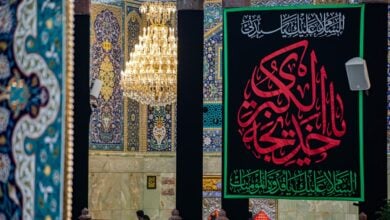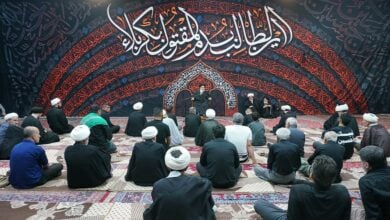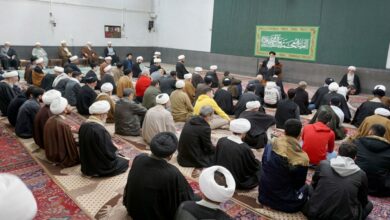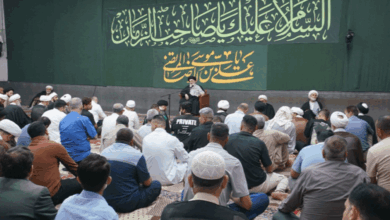Grand Ayatollah Shirazi Presents Arguments to Support Ahl al-Bay’s Presence in First Arba’een Pilgrimage
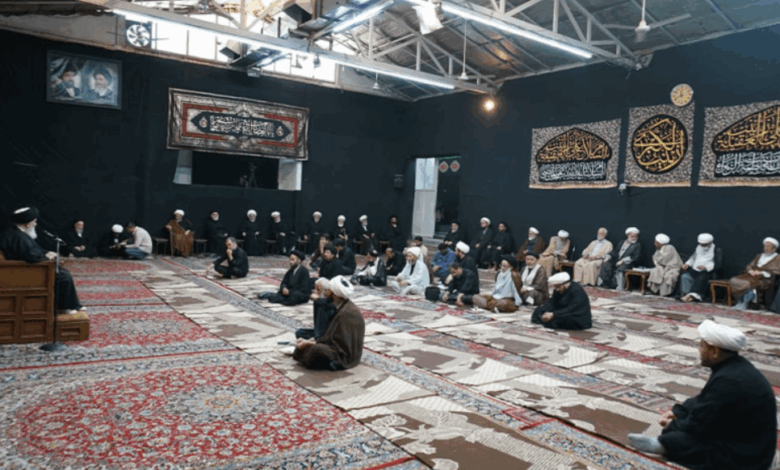
During his daily scholarly session on the 9th of Safar, 1447, Grand Ayatollah Seyyed Sadegh Hosseini Shirazi argued that the return of Imam Hussein’s (peace be upon him) family to Karbala on the first Arba’een is more historically plausible than the second.
Grand Ayatollah Shirazi based his conclusion on several key historical and logistical points. He first highlighted that travel times from Kufa to Mecca for the Hajj pilgrimage typically took about two weeks, and even a week when done quickly. The distance from Damascus to Karbala is considerably shorter than the 2,000 km between Kufa and Damascus, making a return journey in time for the 20th of Safar, the day of Arba’een, entirely feasible.
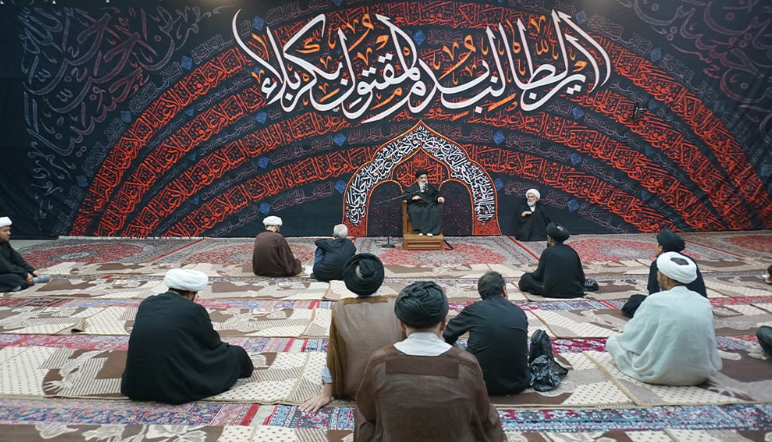
He explained that the initial, lengthy journey from Kufa to Damascus was not a direct trip but was intentionally prolonged by Yazid’s forces who paraded the family through various cities to torment them. The Supreme Marja suggested that a direct, unhindered journey would have taken no more than a week. This, he argues, makes the idea of a second-year Arba’een less likely.

Furthermore, he referenced the account of Jaber ibn Abdullah al-Ansari, who is widely believed to have been at Imam Hussein’s tomb on the first Arba’een. His Eminence reasoned that news of the martyrdom would have reached Jaber swiftly, giving him enough time to travel from Medina to Karbala within the 40-day period.

Finally, he pointed to historical evidence that the pilgrimage itself was a known practice before the time of Imam Sadiq (peace be upon him). He also noted that Imam Hassan al-Askari (peace be upon him) listed visiting Arba’een as one of the five signs of a believer, further suggesting a long-standing tradition. Grand Ayatollah Shirazi concluded that the historical and logical evidence points more strongly toward the first Arba’een as the date of the family’s return.


